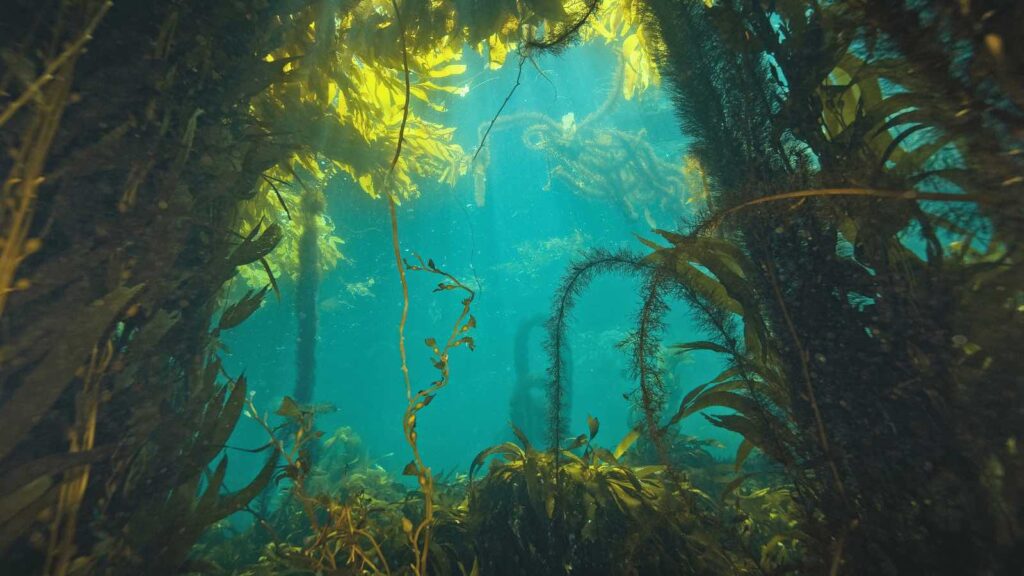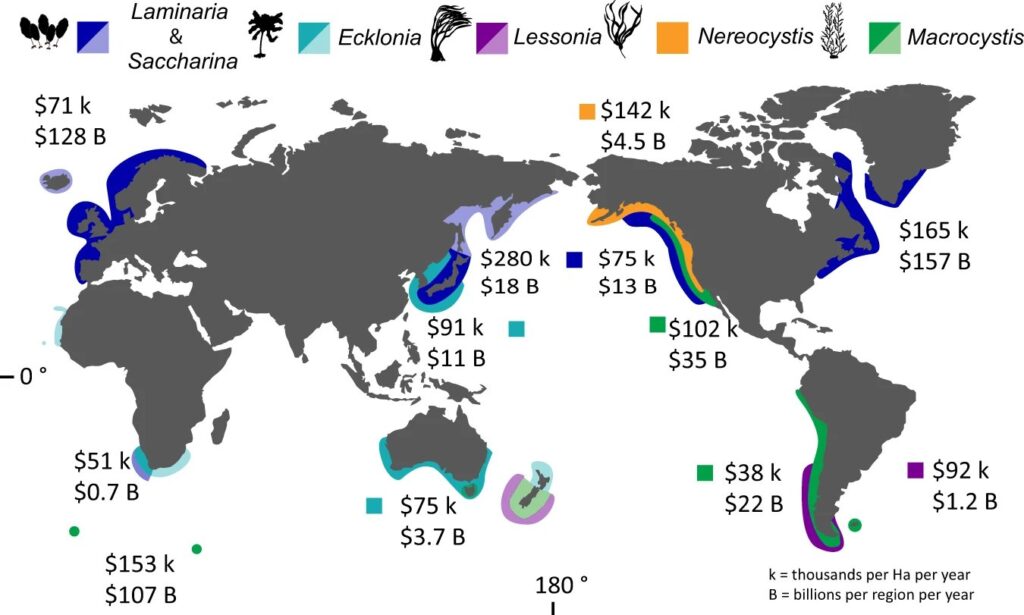The study finds that kelp forests are valued at US$500 billion per year. The highest of these values was the removal of excess nitrogen from the water, which can trigger blooms of algae, reduced water quality, and ultimately oxygen-depleted dead zones.
A third of the Earth’s coastlines are covered by a forgotten and neglected ecosystem, known as kelp forests. These underwater forests have been sustaining people and cultures for millennia, yet most of us are only vaguely aware of the vibrant masses of seaweed hugging the ocean shores around the world. However, a new study published in Nature Communications reveals the first global estimate of the economic value of kelp forests. The study finds that kelp forests provide hundreds of billions of dollars in value to humans across the world.
RELEVANT SUSTAINABLE GOALS



Kelp History
Kelp forests have been used for centuries to fertilize soil, treat goiter, and fortify building materials. They are also the main source of alginate, a common food and medical additive. Kelp forests support important fisheries of abalone, lobsters, and many different types of fishes, and draw carbon from the atmosphere, exude oxygen, and help reduce nutrient pollution in our oceans.
Despite their importance, kelp forests tend to be forgotten or misunderstood. This knowledge gap impedes desperately needed action and conservation. Kelp populations in northern California, Tasmania, and the Salish Sea have all but disappeared in living memory, and kelp populations have been continually declining over the last 50 years.
The research has brought together data from all across our oceans to produce a global estimate of the economic value of kelp forest ecosystems. The study finds that kelp forests are valued at US$500 billion per year. The highest of these values was the removal of excess nitrogen from the water, which can trigger blooms of algae, reduced water quality, and ultimately oxygen-depleted dead zones. A close second was the fisheries values—kelp forests support some of our most iconic fisheries, including lobster and abalone. Lastly, the carbon sequestration of kelp forests was comparable to other terrestrial and marine ecosystems, but the economic value was much lower.
The battle to save our kelp forests is just getting started, and we need greater action to protect these intrinsically and economically valuable marine ecosystems. That is why researchers have started the not-for-profit Kelp Forest Alliance and have launched the Kelp Forest Challenge, a global call to protect and restore 4 million hectares of kelp forest by 2040. This is a call for governments to meet their commitments to the Kunming-Montreal Global Biodiversity Framework and act now to save these ecosystems and #HelpTheKelp.
You may also be interested in :
Reshark Project : Rebuiding Shark Populations by Releasing 500 Baby Sharks In Raja Ampat, Indonesia



